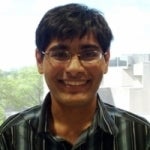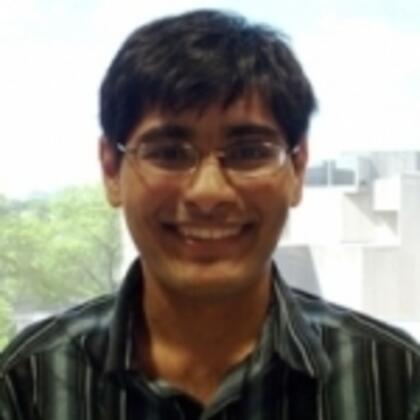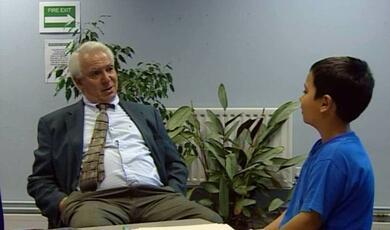The Tragedy of Easy Problems
Share
- Details
- Text
- Audio
- Downloads
- Extra Reading
These are those challenges, particularly in development and global health, for which we have identified proven solutions but have failed to act on them sufficiently. This lecture will discuss the phenomenon, why it exists, and suggests some examples and solutions, in a hope for more effective development work.
This lecture will be hosted in association with the Fulbright Commission. Other lectures by Distinguished Fulbright Scholars can be accessed here.
Download Text
Gresham College, 2 March 2011
The Tragedy of Easy Problems
Prajwal Ciryam
I will never forget those three women. We escorted them from their nursing home in Chennai, India, to the local hospital where they would receive free cataract surgeries. I am not sure how long they had been blind — perhaps years. At the hospital, they sat in the waiting room, quiet and nervous. They returned from the operating room minutes after they entered, white patches over their eyes for the incisions to heal.
They were all smiles. In just a few days, they would be able to see clearly again. On the bumpy auto rickshaw ride back to home, they were talkative and excited. Afraid for these frail women’s safety (and maybe my own), I took hold of one of their hands. Holding her hand, I could feel the gratitude and relief that the surgery had brought. I had done almost nothing in this process, but I felt a part of a larger system that was transforming people’s lives.
I would find myself even more astounded after traveling to the small city of Erode. There, local physicians were reversing thousands of people’s blindness for free, in an economically sustainable way.
Yet millions of others around the world — badly in need of cataract surgery to see again, to support their families again, to contribute to their communities again — are today unable to get treatment. It is the tragedy of easy problems.
Easy problems
Countless individuals in the developing world face problems that are too easy to solve. Their struggles are simple and, in their simplicity, devastating. From diarrheal disease therapy to clean water programs, mosquito nets, and vaccines, we can make more of an impact than we have. Yet in the uproar of attention to global health, this hopeful fact often receives the smallest corner, and tens of millions continue to live in unnecessary strife. The tragedy of easy problems is their story, one of collective neglect and distracted attention.
Easy problems have well-defined solutions that are economically feasible, technically effective, and scalable. That solution, then, comes in three parts: financial, logistic, and technical. The implementation is not necessarily easy or straightforward — nothing ever is in global health and development. However, these problems are more tractable than the alternative —those for which both the concept and the implementation are challenges.
Nearly six years ago, I first visited the Arasan Eye Hospital in Erode, a city of about 400,000 in the southern Indian state of Tamil Nadu. That visit inspired the founding of CatarACT International, an organization that intended to support developing world health care workers to create high-volume, low-cost cataract surgical clinics. At Arasan, a handful of surgeons performed thousands of sight-restoring surgeries every year — for free. The main problem these surgeons were treating was cataracts, the world’s leading cause of blindness. Of the nearly 40 million people who are blind in the world, around half have cataracts.1
Cataracts occur when the eye’s lens changes from clear to opaque. The reasons this occurs are not entirely clear, but the problem is strongly age-related. While the cause of cataracts is still an open scientific question, treatments are as old as recorded history. The first step of treating cataract blindness today dates back to the ancient Indians and Egyptians: Break the lens into pieces. The first report of actually removing the afflicted lens comes from Paris in 1748. The next big revolution in cataract treatment came in the 20th Century when it became possible to replace the removed lens with a plastic lens. Overtime, the surgery became extremely fast and extremely cheap.2
The variant that most public organizations recommend for the developing world is called small incision cataract surgery. This surgery can takes 15 minutes, costs $15, and be over 90% successful.3,4 Watching these surgeons work is something extraordinary: Their speed means that a few surgeons can treat a large number of patients. At Arasan, large scale screening events brought in scores of patients to receive surgery of a 24-hour period. Since the surgeries are so inexpensive, revenue from patients who can afford care is able to subsidize a very large charitable service.
Down the road from Arasan is the Aravind Eye Hospital, which pioneered the highly efficient approach now being used at a number of hospitals across India. The vision of Dr. Govindappa Venkataswamy, who founded Aravind in 1977, was to bring to ophthalmology the scale and efficiency that McDonald’s brought to selling hamburgers.5 This meant coupling high-speed surgeries with an assembly-line approach to processing and preparing patients and the operating room.
Aravind also employed elaborate outreach mechanisms to identify rural patients who needed care. This model has been replicated at numerous other hospitals in India, including Arasan. Hospitals build local ties with surrounding communities, with whom they organize and advertise eye health screening programs. They take a nurse, an optometrist, an ophthalmologist, and perhaps a few volunteers to these communities at a prearranged time and then start seeing patients. Quickly, these health care workers check patients’ visual acuity, providing them important medical information the power of glasses they might need. Some programs also sell low-cost eyeglasses to patients on site.
More significantly, the ophthalmologist performs a quick check for more serious ophthalmic problems, particularly cataracts. Because many of these poor, rural patients have not seen an ophthalmologist in years, their cataracts are often terribly obvious. This is why, as an undergraduate armed with only a flashlight, even I was able to identify cataracts.
At Arasan, I saw this remarkable system at work. Critical to its success was the transportation the hospital provided. They bussed cataract patients back to the hospital (sometimes from hours away), where they provided meals, a place to rest, a follow-up screening, and surgery. By making the outreach system extensive, the hospital could attract enough patients back to make full use of the efficient hospital management processes in place.
While government subsidies helped pay for all of this, a look at Arasan’s financing (and financial studies of other hospitals) makes it apparent that they are often sustainable independently. This is because these hospitals also cater to so-called “private” patients, who can afford more expensive services — whether they are private rooms or pricier foldable lenses or name-brand glasses or the phaco-emulsification procedure that is standard in the developed world. There is an attractive positive feedback loop here. The hospital’s charitable services increase the surgeons’ volume and experience, serving to make them more attractive to patients who can pay full price for treatment.
For a problem to be easy, we must have a technical solution (like a cataract surgery), a logistics solution (like an outreach program to reach rural patients), and a financial solution (like a model in which revenue from patients who can afford care subsidizes treatment for those who cannot). It would be naïve to argue that these solutions work equally well in all communities. Nor are these solutions perfect. Yet easy problems are ones whose solutions are effective in a variety of different of settings. Easy problems are not painless, nor are they trivial; the ease lies in the plan, not necessarily in the action.
Cataracts are by no means the only easy problem. In 2009, over two million people died from diarrhea, the majority in Africa and South Asia. Diarrhea is the second leading cause of childhood death. Diarrheal deaths have many causes. Bad sanitation and unclean drinking water are a major reason that people contract diarrhea. In addition, rotavirus and measles can cause diarrhea. Rotavirus infection leads to 350,000 to 600,000 childhood diarrheal deaths per year. Poor nutrition renders individuals more susceptible to infection and illness, no matter the cause.6
While this problem seems complicated, with a series of social, medical, and structural components, much of the solution is obvious. There are effective vaccines for rotavirus and measles; efforts to make sure every child can get these vaccines are critical. Perhaps more significantly, oral rehydration therapy, supplemented with zinc, has been shown to be extremely effective in treating diarrhea. Yet oral rehydration therapy reaches only 39% of children suffering from diarrhea in developing countries, a number that is far too low. Diarrheal diseases are an obvious opportunity to solve an easy problem — providing access to a highly effective therapy that has already been distributed to millions of people.6
As human inquiry expands our knowledge, the number of easy problems—those for which we have workable, successful, long-term solutions—grows. A case in point is malaria. There are over 225 million cases of malaria every year and the disease kills over 750,000 people annually. There are already easy problem components to the malaria challenge. There have been highly successful programs to increase usage of mosquito nets, provide those drugs that are available, and fight the mosquito vectors that spread the disease.7
But upcoming technical advances will make a huge difference. Jay Keasling, a professor Chemical Engineering and Bioengineering at the University of California at Berkeley, has made significant headway in addressing the shortage of malaria drugs. His cutting edge research employs synthetic biology to have yeast make the drugs for us, and could reduce the cost of malaria treatment to just $0.25 per dose.8
Later this year, we will also find out the results of an ongoing Phase III clinical trial for the first malaria vaccine. If this trial is successful, it could make treating malaria a much easier problem. The world community knows how to roll out vaccines. The eradication of small pox using a vaccine is counted amongst humanity’s greatest achievements. We are close to doing the same for polio. And in both the developed and developing worlds, the rates of measles, influenza, and other once ubiquitous infections, have dropped dramatically. A malaria vaccine would give us the technical solution to go along with the logistics and financial solutions that have already made vaccination-based therapy so effective in global health.9
From water to agriculture to malaria prevention, a whole range of problems is becoming easier to solve. With innovation comes responsibility: When we invest in development, we must prioritize easy problems. Here, I provide my own experiences with the tragedy of easy problems as it relates to healthcare. In fact, it cuts across disciplines in a profound way.
Why we forget them
In trying to shift our focus to easy problems, we face two considerable roadblocks. The first is that the attention of the media and public is drawn preferentially to problems we are unable to solve. The second is that developed world health care workers do not engage with the developing world as productively as they could. Overcoming these hurdles will give us a real shot at tackling the many easy problems that persist.
The drama of disaster
Have you heard of Rinderpest? I had not, until very recently. Rinderpest is one of the most lethal diseases to cattle. Or, it was. Last October, scientists at the United Nations announced that the disease had been eradicated entirely.10 The significance of this accomplishment cannot be overstated. From a technical standpoint, it is the only second infectious disease ever eradicated by humans (the first being small pox, whose eradication is often heralded as one of the greatest accomplishments in human history). But the elimination of Rinderpest also has enormous practical implications, freeing developing world farmers from one of their greatest scourges. This means more security for farmers and more food for communities in need.
The Rinderpest story, or its conspicuous absence of the popular consciousness, illustrates a troubling phenomenon. It, and so many other solvable problems like it, does not carry the romance of acute or inscrutable challenge. The news coverage of horrible natural disasters is intense. The media also devotes much of its global health and development coverage to perpetual difficulties. We do not have straightforward solutions to AIDS, tuberculosis, corruption, climate change, and numerous other problems. But as it were, this uncertainty draws attention.
In 2007, 155 experts in 50 countries were surveyed to identify twenty “Grand challenges in chronic non-communicable diseases.” The challenges included things like “[raising] the political priority of non-communicable disease” and “[studying] and [addressing] the impact of governmental spending and taxation on health.” These are complex problems without clear answers. Among the list of priorities, there were a few that touch on the doable. For instance, the group recommended that we “deploy universally measures proven to reduce tobacco use.” It also suggested increasing the health care workforce. But nowhere on this list of priorities is the goal of identifying and scaling global health success stories. New research, new methods, and new ideas often trump the old and the boring.11
This has real consequences. The New York Times reported in 2009 that the focus of donors on AIDS might detract from the treatment of deadly childhood illnesses. Mickey Chopra, the chief of health at Unicef, said that “all the attention has gone to more glamorous diseases, but this basic thing has been left behind.” Reducing deaths from diarrheal diseases dramatically is an easy problem. Bioethicist and White House adviser Ezekiel Emanuel called such childhood killers “mundane but deadly diseases,” and indeed, so they are.12
The counterargument, voiced by Jeffrey Sachs, Director of the Columbia University Earth Institute, is that we should never have to make this choice. There is enough money to invest in development that we can fight AIDS and treat diarrhea. But in the face of an economic recession and developed world worries about government deficits, foreign aid is sure to suffer. Regardless of the commitment from the international community, the needs will always outstrip the resources available. Development is a zero sum game. We must make what Sachs calls “a terrible and tragic choice.” Failing to choose does not free us from the consequences. We are duty-bound to help as many people as we can with how much ever we have in ways that help to strengthen their communities.12
Vacations and values
The average physician or medical student operates in a broken system of global engagement. In the development community there is a lot of talk about changing this through agency, empowerment, and avoiding paternalism. If addressing the tragedy of easy problems means building solutions that work for the long term, we certainly have to do this. In healthcare though, the source of paternalism is not just structural. We will not fix it by reorienting finances or reorganizing aid agencies. It is about the personal journey that many of us to take to the profession of medicine.
I have known I wanted to be a doctor since I was eight years old, which means that I have had a lot of time to shape the image of the kind of doctor I want to be. I was born in a village in Southern India and grew up in a little town in North Carolina, both places where it is not easy for people to get healthcare. In Williamston, my mom was the nutritionist and then director for the health department; she spent a lot of time helping her patients to obtain the public assistance they needed. There were teenage mothers and struggling families from a town that itself was on the edge. So when I thought about becoming a doctor, reaching people who did not always have the best access to care was on my mind. That is nothing special; I think it’s true of many, if not most, future physicians.
This may seem benign, but it has troubling consequences. I have thought dreamily about the prospect of going into some developing country, doing a bunch of surgeries, and leaving a hero. I have heard the stories on the news extolling the people who do this, and so has everyone else. It is not hard for this to become the model of resource delivery to the developing world. What exactly does this look like?
Intrepid doctors, nurses, students, and technicians swoop into a devastated “Third World” country. Using their resources and expertise, they alleviate the suffering of the needy, filling the gap between what failed states can supply and what the impoverished require. In just a few weeks, they take care of hundreds, and bring smiles to the faces of all those who have toiled on with so little for so long. Theirs is heroism, nobility, and a story fit much more for a promotional pamphlet than for the realities of sustainable development.
This romantic perception of the role of healthcare workers in the project of advancing global health manifests itself in myriad ways. The medical mission is perhaps the most common one. They occur in the form of short-term stints by physicians or rotations abroad by students or residents. These workers provide direct care to patients — treating community members, taking a lot of photographs, and sightseeing on their days off. They get the great satisfaction of improving people’s lives in indigent settings. The community they service also benefits, receiving care for the duration of the foreign physicians’ stay, as well as a parcel of supplies that may last for a longer period than that.
For a long time, this arrangement seemed good to me. I have to admit that when I was an undergraduate, I first visited the Arasan Eye Hospital and a clinic in Chennai with this perspective. I thought that I could help (in whatever limited capacity a college student has) to provide a much-needed service to those who lack access. Indeed, the medical mission provides a distinct advantage in the short-term to all parties. The results derived from investments are immediate and easily quantifiable: Patients are treated, vaccines and other supplies are replenished, and a sense of accomplishment is had.
It is easy to see why healthcare workers want to go on medical missions. It makes sense for sponsoring organizations, too, that can report back to their funders and the media about specific positive outcomes. Community leaders can easily justify the introduction of these outside influences into their towns and villages. Locals secure material gain.
In reality, the medical mission can be subversive, not only failing to provide an effective plan for the improvement of communities, but also actually hampering long-term development. It provides temporary care that often obviates the need to engage local communities and reduces the incentive for those communities to build durable structures for healthcare delivery. I have even seen this problem with local charitable work in Chicago. Last summer, I made a couple of visits to a free clinic served by volunteer physicians and medical students from local universities. The lines were long, the visits short, and physicians strapped with multiple obligations sometimes arrived late or left early. Undoubtedly, for many patients these volunteer services are indispensable. But that is the problem—they must depend on the inherently undependable.
This perpetuates the high costs associated with medical missions and fosters a dependency culture that opens developing world patients to the volatility of charity and aid resources from abroad. The global recession has slowed the donations that power care in so many communities.
These medical missions do have their place. In emergency situations, they can provide needed, immediate relief. Initial experiences with developing world health care can also be formative for health workers from developed countries. These experiences can inspire longer and more serious engagement with developing world problems, creating a baseline understanding that facilitates partnerships with members of a community.
It is a leap to translate short-term missions into long-term involvement. Many health care workers simply do not know how. For overcommitted healthcare professionals looking for a way to help out, the medical mission is conceptually simple and requires only intermittent involvement. This alleviates much of the complexity of engaging with sometimes overwhelming global challenges. There are limited venues that provide these professionals with ways to engage with such issues in a more effective way way, or to adapt their clinical interests to effective projects in the developing world.
Then, we see that three primary motives underlie the practice of medical missions: A desire to help others, a lack of knowledge about how to build long-term infrastructure, and selfishness. If we intend to harness the incredible resources that developed country healthcare workers can offer, then we must purge the negative externalities of the selfishness, remedy the lack of knowledge, and capitalize on the desire to help others.
Achieving the possible
When the writer Clay Shirky speaks about the “cognitive surplus” of the industrialized world, what he means is that we have extra time and energy to put towards helping others to solve their problems.13 Medical missions try to serve health care workers as an outlet for this cognitive surplus, but they fail to make use of these individuals in the most effective way.
The physicians Claire Panosian and Thomas Coates wrote in the New England Journal of Medicine about the greater involvement students and young physicians now have in global health projects. The projects they documented included rotations abroad, clinical missions, and research activity. Of these, research is the most promising use of cognitive surplus: It has the potential to provide new information that communities can consider and apply in helpful ways.14
Yet in many cases, we do not need to ask what works, but rather, how we can apply what works in a new setting. The tragedy of easy problems is that we already have so many of the answers. There are already so many potential solutions to devastating global health problems; we need to understand these solutions better, recognize their advantages and limitations, and begin applying them in appropriate settings.
Doing what works
We are on the verge of eradicating two hugely significant infectious diseases: polio and guinea worm disease. The polio campaign involves deploying a highly effective vaccine using the techniques for dissemination with which the world community is already familiar. The guinea worm campaign, conducted by the Carter Center, has involved aggressive education and prevention, since there is no good treatment or vaccine for guinea worm infection. The Carter Center’s successes may yield lessons for those working on problems with similar challenges.15, 16
Both polio and guinea worm disease were included as case studies in Millions Saved: Proven Success in Global Health, a review of “remarkable cases in which large-scale efforts to improve health in developing countries have succeeded.” Unsurprisingly, cataracts and diarrheal disease are also included in the 20 cases in the study and its follow up.15, 16
The authors highlight six common elements of success, which happen to meet the criteria of a technical solution, a logistics solution, and a financial solution. The authors mention:
Predictable, adequate funding from both international and local sources.
Political leadership and champions.
Technical innovation within an effective delivery system, at a sustainable price.
Technical consensus about the appropriate biomedical or public health approach.
Good management on the ground.
Effective use of information.15, 16
The Millions Saved project is exciting because it recognizes the importance of the ideas and efforts already in practice. Certainly, none of the cases is universally applicable. But effective cataract programs can help many more communities than they do. The educational efforts to eradicate guinea worm disease can apply to other education-based health initiatives. And the fight against polio and diarrheal diseases can be extended to reach more patients who suffer from these diseases, and to use those systems and structures to address other problems.15, 16
The incentive triangle
We know we have intimidating choices, but how do we choose? A lot of models exist to think about how to negotiate the relationship between workers and communities, but this is one that I have found useful. I call it the incentive triangle, and it is nothing new. The three points of the triangle are the worker’s desires, the community’s needs, and opportunity. In every development situation, we search for the best compromise between the three.
When we search for personal satisfaction alone, we find all the problems that medical missions and paternalism can create. But that’s not to say our own interests aren’t important. Of course we want aid workers who are excited about their work. I did a better job leading CatarACT International because I was with those three women from Anna Illiam when they got their surgeries. When I got lost in abstractions, I could think back to the tangible fact of helping people to see again. We want aid workers to believe in their work and themselves. They just need to believe in the communities, they serve, as well.
To be useful, we have to know what communities actually want. Engaging with individuals and community leaders is critical to knowing what problems exist. In the fight against the tragedy of easy problems, one must know which easy problem applies. Development professionals probably do not go far enough in doing this. I know that my friends who are community organizers see the way that we connect with communities as a box that we are ticking off. We could definitely do a better job, but not all development works best through the open-ended means of community organizing.
The fact that we do not always engage in full-blown community organizing is because we are sometimes focusing on a different aspect of the community. Communities are diverse and complicated; defining their needs depends on whom you ask. Development workers have to spend a lot of time with community leaders and skilled workers if they want to make sure that a project has the leadership to begin and continue. That does not mean that they ignore everyone else, but it does mean that efforts become more directed.
We sometimes get that direction from the unlikeliest places. That’s the wildcard: Opportunity. Somewhere in that struggle between personal wants and community needs, the deciding factor is often the chance that improves the odds of success. A personal connection to a resource or funding or an individual can make all the difference in actual, everyday projects. If the Director of Arasan Eye Hospital, Dr. V. Panneerselvam, had not been interested in impacting other communities, I probably would not have started CatarACT. His interest in global health led him to volunteer in Ghana, which is where he developed the contacts that he shared with me. It was luck that Yuna Rapoport and I were in India at the same time as Dr. Gyasi. All of these personal connections put us in a position to do something that not many other people could. This is why pursuing that which the community or an aid worker wants most is not always smart. Sometimes, a particular person just has to do a particular thing, because it will work better in his hands than anyone else’s. Life is stochastic and so must be our pursuit of easy problems.
When we know about the incentive triangle, we can think carefully about how we weigh our choices. We can better recognize those times that we let personal emotion cloud our judgment. But we can also trace the reasons that people do not always follow the decisions or wishes of the communities with which they are working. We can recognize the value of jumping on opportunities and distinguish between being practical and being paternalistic. This evaluation is the first step towards a new framework for all sorts of disciplines within development.
Local knowledge, global reach
The truth is that my own efforts running CatarACT International failed. Dr. Gyasi opened a pilot clinic in Accra last year — a very exciting development. However, we at CatarACT recognized that for a variety of reasons, we were not able to contribute to that pilot and further operations in a fruitful way. It was a difficult choice to close the organization, but one that taught us important lessons about global health and the many hazards of development.
Importantly, we learned that even easy problems could be hard. But we also recognized that it is important to fail well. Considering the discouraging rate at which development projects fail, it is necessary to be reflective about what value one can add at every stage.
Failing well
According to water.org, a U.S.-based non-profit, “over 50 percent of all water projects fail.”17 Building a development project, like starting a small business, is always an uphill battle. For this reason, it is critical to plan for failure.
Every stage of a development project has a risk, but also useful information. Unfortunately, this information is often not easy to distribute unless a plan is already in place. Every organization should ask: How can what we know benefit of others if we are no longer able to continue our work? A commitment to reasonable transparency and generosity is necessary for such success.
One obstacle to this manner of thinking is a sharp focus on the endpoint of a project. It could be valuable to build into the core mission of an organization the results of intermediate steps. That is, the goal of a project to deliver cataract surgeries in a sustainable way is not just about surgeries or infrastructure, but also about research and plans along the way. An organization that considers these milestones to be deliverables, as well, can never be a complete failure.
A cycle for success
One structure that promotes thinking in this way is to approach development projects in stages. Leila Wilmers and I are exploring this in a project we are organizing right now, called TRYcycle. TRYcycle is a development research and action group that intends to identify critical needs in which measurable, feasible, and scalable positive impact can be achieved. The goal is to identify great projects in development, especially global health that can be brought to scale by partnering with local communities that are in need.
TRYcycle will operate on a three-phase, nine-month development cycle. At the end of each stage, the team will evaluate whether it has delivered as promised. If it has not met all of its goals, then the team restarts the development cycle. If it has met the goals, it moves to the next phase.
The first phase will involve extensive research in which promising projects will be identified. The primary deliverable of this phase is a preliminary plan for a new venture. In addition, a set of other promising projects that our team has chosen not to pursue will be made publicly available for others’ information. Finally, the course of the research phase will produce regular updates of the discovery process in real-time, adding value to other members of the development community.
The second phase will be a planning phase in which the preliminary plan will be developed into a complete business plan; necessary logistic arrangements will be made; and seed capital will be solicited. During this phase, we will perform site-specific research and develop key relationships with local partners. Primary deliverables from this phase will include the full business plan, the set of strategic relationships, and seed capital.
The third phase will be a funding phase. At the beginning of the phase, a fundraising goal will be set to the minimum amount needed to launch a pilot program. By soliciting grants, private donations, and/or social venture capital, we will attempt to meet our funding needs.
Subsequent to this process, the new venture will launch as an independent pilot program. Some members of the team involved in the development cycle will move over to the new venture to lead it. A core team will remain behind to begin a new cycle.
The main features of this concept are an emphasis on process, a focus on useful deliverables at each stage, and a commitment to leveraging great ideas already in existence. We consider this the roadmap to connecting easy problems with their promising solutions.
We consider this the roadmap to connecting easy problems with their promising solutions. We hope that we can use our own cognitive surplus to make a dent in those easy problems. Practitioners on the ground have the best hope of leading real change in their communities. We in the developed world can use our resources to be on the lookout for what works. We can all be conduits for great ideas, humble supporters for a grand project to make life more livable, one easy problem at a time.
Acknowledgements
I would like to thank Dr. V. Panneerselvam and Dr. Michael Gyasi for inspiring my engagement in global health over the last half decade. My gratitude to the whole team at CatarACT International, especially Yuna Rapoport and Nick Naroditski, who founded the organization with me; Amar Vira who taught me a great deal about global health; Ashwin Anandani, whose intelligence and commitment were essential; and Yamei Liu, Chris Yim, Gokul Kumar, Hema Ramkumar, Tanay Dudhela, and Neha Malhotra, whose passion for global health always kept us motivated. Many thanks to Shivan Sivakumar, with whom I have had productive discussions about global health without which this presentation and paper would not have been possible. Thanks also to Leila Wilmers, without whom the TRYcycle project would be impossible, and with whom I hope to build a successful project for the future.
Funding
During the course of this work, I have been personally funded for graduate work by the Northwestern University Medical Scientist Training Program, the Fulbright Scholarship, and the St John’s College, Cambridge, Benefactors Scholarship. CatarACT International received funding from Northwestern University and private donors.
References
Brian G, Taylor H. Cataract Blindness--challenges for the 21st century. Bull. WHO. 2001.
Bellan L. The Evolution of Cataract Surgery: The Most Common Eye Procedure in Older Adults. Geriatrics and Aging. 2008; 11(6):328-332.
Gogate PM, Deshpande M, and Wormald RP. Is manual small incision cataract surgery affordable in the developing countries? A cost comparison with extracapsular cataract extraction. Br J Ophthalmol. 2003; 87: 843-846.
Tabin G, Chen M, and Espandar L. Cataract surgery for the developing world. Current Opinion in Ophthalmology. 2008; 19:55-59.
Miller, S. McSurgery: A Man Who Saved 2.4 Million Eyes. Wall Street Journal. 5 Aug 2006.
UNICEF and World Health Organization. Diarrhoea: Why children are still dying and what can be done. 2009.
World Health Organization. World Malaria Report: 2010. 2010.
Sample, I. Jay Keasling: ‘We can use synthetic biology to make jet fuel.’ Guardian. 27 Feb 2011.
Nayar, A. Malaria vaccine enters phase III clinical trials. Nature. 27 May 2009.
Ghosh, P. Rinderpest virus has been wiped out, scientists say. BBC News. 14 Oct 2010.
Daar, AS, et al. Grand challenges in chronic non-communicable diseases. Nature. 2007. 450, 494-496.
Dugger, CW. As Donors Focus on AIDS, Child Illnesses Languish. New York Times. 29 Oct 2009.
Shirky, C. Cognitive Surplus: Creativity and Generosity in a Connected Age. 2010. Penguin Books.
Panosian C and Coates TJ. The New Medical “Missionaries” — Grooming the Next Generation of Global Health Workers. N Engl J Med. 2006; 354: 1771-1773.
Levine R, et al. Millions Saved: Proven Successes in Global Health. 2004. Center for Global Development.
Levine, R. Case Studies in Global Health: Millions Saved. 2007. Jones & Bartlett Publishers.
Water facts. Water.org. 2 Mar 2011. http://water.org/learn-about-the-water-crisis/facts/
©Prajwal Ciryam, Gresham College 2011
Part of:
This event was on Wed, 02 Mar 2011
Support Gresham
Gresham College has offered an outstanding education to the public free of charge for over 400 years. Today, Gresham College plays an important role in fostering a love of learning and a greater understanding of ourselves and the world around us. Your donation will help to widen our reach and to broaden our audience, allowing more people to benefit from a high-quality education from some of the brightest minds.


 Login
Login







